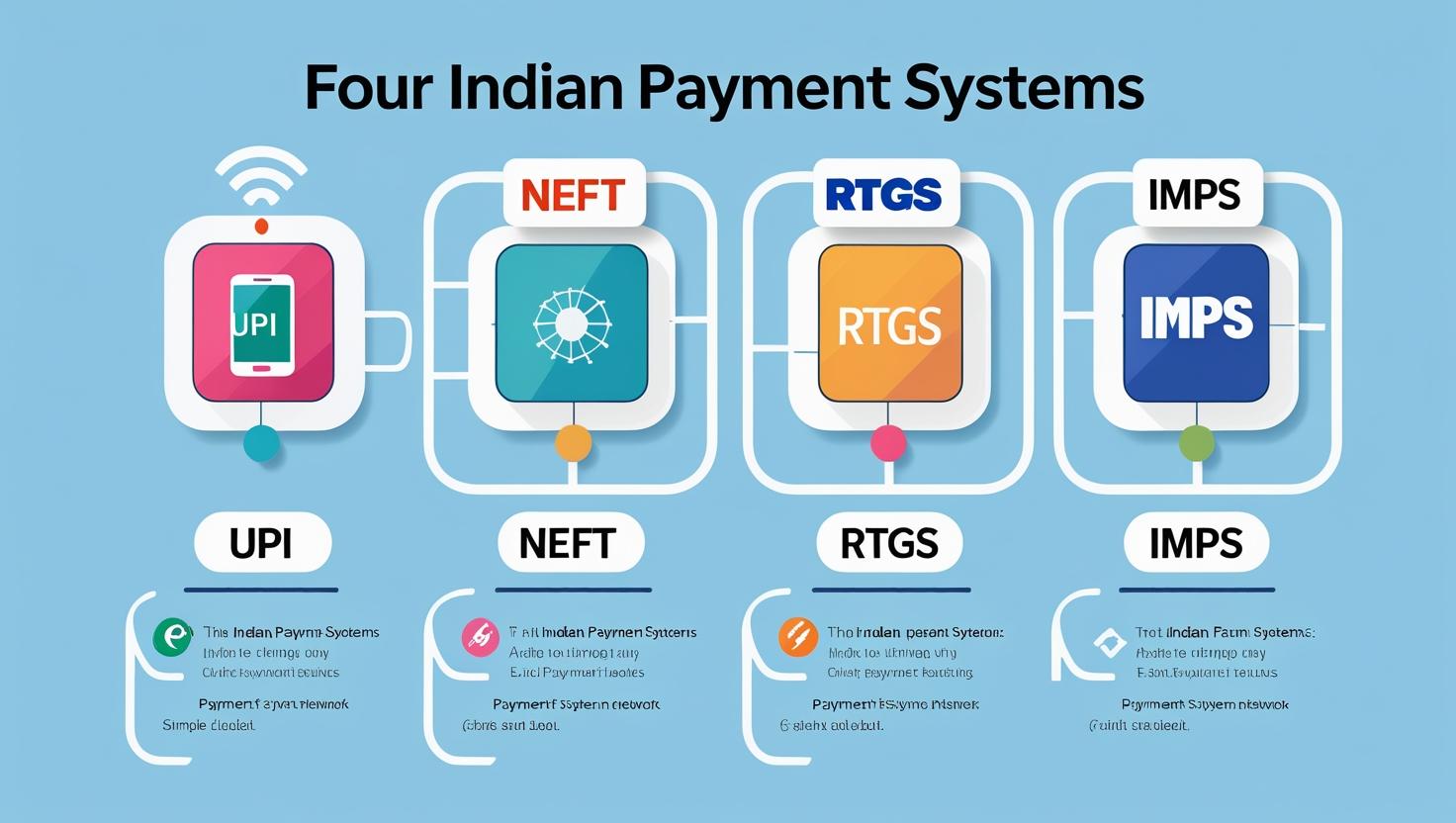In modern Indian Banking, UPI, NEFT, RTGS, and IMPS are the most preferred modes of payment to transfer money between two bank accounts. These methods of payment facilitate easy ways of transferring money between two bank accounts. In this blog, we will try to understand the merits and demerits of these modes of payment.
UPI:- Unified Payment Interface.
It is a revolutionary technology framework used for mobile payments in India. It was launched in 2016 by National Payment Corporation of India (NPCI). It is the banking technology infrastructure on which all banks, financial institutions, and users transact money. It consists of software and a set of guidelines and protocols maintained by the NPCI.
UPI ID
Over this network, banks and Fintech companies have created User Interface Apps that we use today. The most popular UPI apps include PhonePe, Google Pay, Paytm, and many more. The user creates a UPI ID on these apps. Every UPI ID is linked to the user’s mobile number and bank account. A UPI ID (Unified Payments Interface ID) is a unique identifier that allows user to send and receive money directly from their bank accounts through UPI apps
For performing transactions, the User looks for another user having a UPI ID or mobile number. Once the user enters the details, the transaction takes place. Money travels from the Sender’s bank account to the Mobile App’s Current account and then finally to the receiver’s bank account.
UPI Transaction Limits
UPI (Unified Payments Interface) payment limits in India are primarily set by the National Payments Corporation of India (NPCI), but individual banks can impose their own, sometimes stricter, limits.
- As per NPCI, for UPI payment, the daily transaction limit is Rs. 1 Lac for P2P ( Person to Person) Transactions.
-
P2M ( Person-to-Merchant) Transactions: Can go up to ₹5 lakh for specific high-value use cases (tax, healthcare, education, financial investments)
NEFT:- National Electronic Fund Transfer
This mode of payment was started in November 2005 by the RBI. NEFT can be done in Online and Offline methods. For offline NEFT, the Customer has to visit the nearest bank. Online NEFT can be done through net banking on a Laptop or mobile. In NEFT settlement of money occurs every 30 minutes between different banks. This is 24 x 7 service provided by Indian banks. A total of 48 times, money gets settled between the banks. So, NEFT is a delayed or deferred method of payment. Here, money is transferred in batches. In NEFT, the customer gets credit in his bank ac in Approx 2 Hrs.
RTGS:- Real Time Gross Settlement.
It is also one of the popular modes of payment transfer. In RTGS, money gets instantly transferred between Bank accounts. RTGS can be done both offline and online. But the minimum limit for RTGS payment is 2 Lakhs. There is no maximum limit for money transfers. This is also a 24/7 service provided by Indian Banks. The customer gets credit instantly. RTGS was started by the RBI on 26th March 2004. Previously, It was used for transferring money from one bank to another. Since April 2004, this method has been used by Normal customers.
IMPS:- Immediate Payment Transfer System.
IMPS is the product of the National Payment Corporation of India (NPCI). In IMPS, money is instantly transferred between accounts. The customer gets credit in his account immediately. There is no minimum limit for money transfer, but the maximum you can transfer is upto 5 lakhs. It is available only in online mode. The IMPS facility is available 24/7 to customers.
Comparison chart: NEFT RTGS IMPS UPI
|
NEFT |
RTGS |
IMPS |
UPI |
| Regulated by RBI | Regulated by RBI | Regulated by NPCI | Regulated by NPCI |
| Online and Offline |
Online and Offline |
Only Online | Only Online |
|
24 by 7 |
24 by 7 |
24 by 7 |
24 by 7 |
| It will take 2 hours to credit the money | Payment transferred immediately | Payment transferred immediately | Payment transferred immediately |
| No Minimum limit and 25 Lakhs Max Limit. | Minimum limit 2 lakhs. Maximum no limit. | No minimum limit. Maximum Limit is 5 Lakhs. | No minimum limit. Maximum Limit is 1 Lakhs. |
Conclusion
UPI (Unified Payments Interface) is the most widely used and convenient option for fund transfers in India. It’s designed for instant and quick transactions. It can be used for small to medium-sized transactions. It is most user-friendly as it requires only a UPI ID, and no other bank details are required.
Readers will also like to read about the following topics
3. PE Ratio
5. Bull vs Bear Phase in Stock Market
6 . XIRR vs CAGR vs Absolute Return
7. Home


